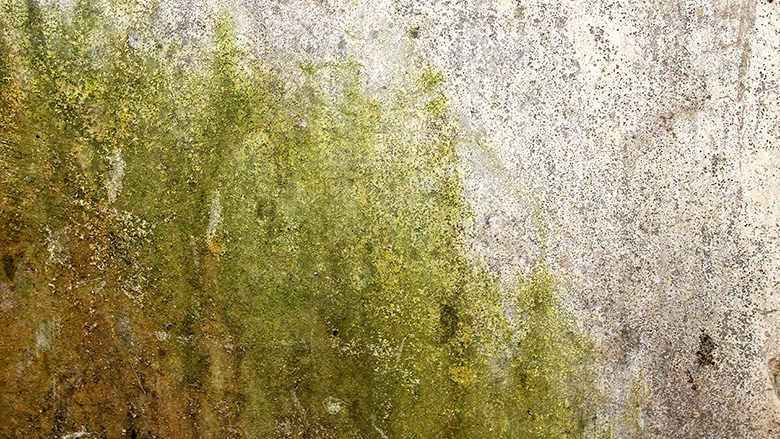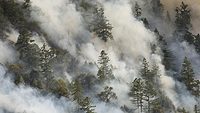Los Angeles Wildfires: A Restoration Professional's Perspective
Persistent Blazes in Los Angeles: Strategies from the Front Lines of Fire Restoration

Photo: Toa55 / iStock via Getty Images Plus
The unprecedented January 2025 wildfires ravaging Los Angeles County present unique challenges for restoration professionals. With over 25,000 acres burned, thousands of structures damaged or destroyed, and confirmed fatalities growing, these fires are creating complex restoration scenarios requiring careful assessment and specialized approaches.
Scale and Scope of Current Fires
The two largest active fires — the Palisades Fire and Eaton Fire — have collectively burned nearly 40,000 acres and the Palisades Fire is 60% contained while the Eaton fire is shy of 90% containment. The Palisades Fire has become the most destructive in Los Angeles County history, with over 23,000 acres burned.
Additional fires including the Hurst Fire, Lidia Fire, and Sunset Fire near Hollywood Hills have further complicated the disaster response.
Immediate Safety Concerns
Structural Hazards:
- Compromised building integrity from heat exposure
- Weakened load-bearing elements
- Unstable roofs and walls
- Damaged connection points and joints
Environmental Hazards:
- Toxic smoke and soot particles
- Released asbestos from older structures
- Melted plastics producing carcinogens
- Contaminated water from firefighting efforts
Hidden Dangers for Restoration Workers
Toxic Chemical Exposure
The urban nature of these fires means restoration workers face exposure to numerous hazardous substances:
- Benzene and other volatile organic compounds (VOCs) from burning synthetic materials
- Hexavalent chromium released from soil and building materials
- Polycyclic aromatic hydrocarbons (PAHs) from incomplete combustion
- Heavy metals including lead, mercury and arsenic
Structural Risks
Post-fire structural assessment reveals several critical concerns:
- Heat-compromised concrete showing spalling and cracking
- Charred wooden elements with reduced load capacity
- Damaged steel components exhibiting warping
- Weakened connection points, especially in joints
Cross-Contamination Concerns
Smoke and Soot Migration
Smoke and soot contamination extends far beyond directly burned areas:
- Microscopic particles penetrate HVAC systems
- Acidic soot residue causes continuing damage
- Contamination spreads through shared walls and ventilation
- Wind-driven particles affect neighboring properties
Water Damage
Secondary damage from firefighting efforts creates additional restoration challenges:
- Standing water promoting mold growth
- Water-soaked materials requiring specialized drying
- Compromised electrical systems
- Rust and corrosion of metal components
Health Impacts and Safety Measures
Immediate Health Risks
Restoration workers face multiple health hazards:
- Respiratory issues from fine particulate matter
- Skin irritation from caustic residues
- Eye inflammation from airborne contaminants
- Potential long-term carcinogenic exposure
Required Safety Protocols
Essential protective measures include:
- NIOSH-certified respirators (N-95 minimum)
- Full protective clothing
- Eye protection
- Regular health monitoring
- Proper decontamination procedures
Insurance Considerations
Coverage Scope
Standard insurance policies typically cover:
- Direct fire damage
- Smoke and soot damage
- Water damage from firefighting
- Temporary relocation costs
Claim Process
Key steps for successful claims:
- Immediate documentation of damage
- Professional assessment reports
- Detailed inventory of losses
- Proper chain of custody for damaged items
Restoration Process
Initial Assessment
Critical first steps include:
- Structural safety evaluation
- Environmental hazard testing
- Moisture mapping
- HVAC system inspection
Containment and Stabilization
Essential preliminary measures:
- Emergency board-up services
- Temporary roof protection
- Water extraction
- Environmental controls
Cleaning and Decontamination
Specialized processes required:
- HEPA filtration
- Dry ice blasting
- Chemical sponge cleaning
- Hydroxyl deodorization
Long-term Considerations
Environmental Impact
Ongoing concerns include:
- Soil contamination
- Groundwater pollution
- Air quality degradation
- Ecosystem damage
Health Monitoring
Long-term health surveillance needed for:
- Respiratory conditions
- Cancer risk
- Cardiovascular effects
- Psychological impact
Professional Recommendations
For Property Owners:
- Do not enter fire-damaged structures without professional clearance
- Document all damage thoroughly with photos and video
- Secure properties against unauthorized entry
- Maintain detailed records of all expenses
For Restoration Professionals:
- Conduct comprehensive hazard assessments before beginning work
- Implement proper containment protocols
- Use appropriate personal protective equipment
- Follow established decontamination procedures
Wrap Up
The current Los Angeles wildfires present unprecedented challenges for restoration professionals. The urban nature of these fires, combined with their unusual timing and scale, requires careful attention to both visible and hidden dangers. Success in restoration efforts will depend on proper assessment, appropriate safety measures and careful coordination with insurance providers and property owners. Sending Prayers to everyone affected.
Looking for a reprint of this article?
From high-res PDFs to custom plaques, order your copy today!






